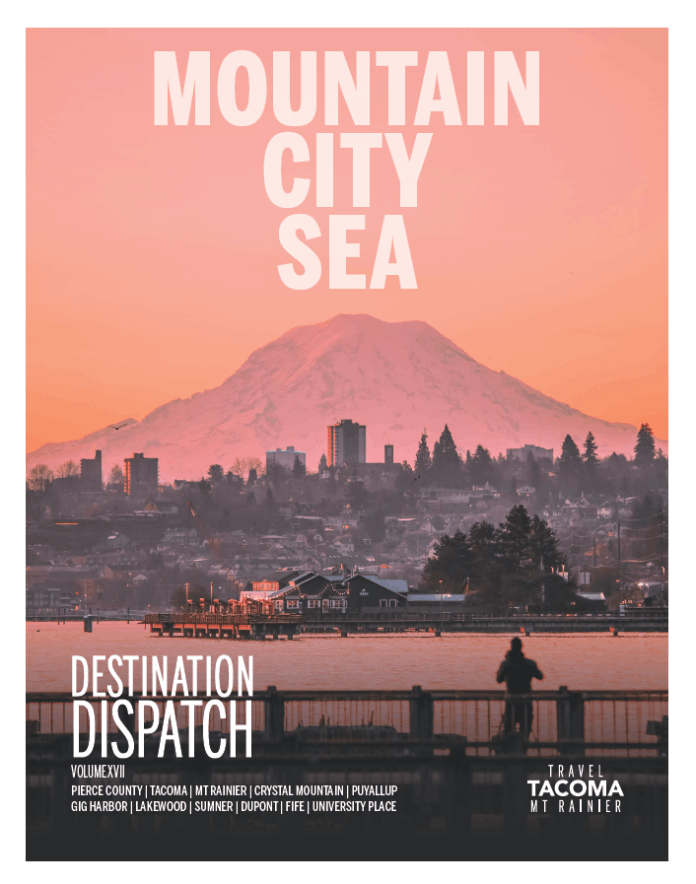History Unveiled: A Journey Through Time
Indigenous Roots & Early Settlement
Long before European settlers arrived, the lands surrounding Commencement Bay were home to the Puyallup Tribe and other Coast Salish peoples for thousands of years. These communities thrived through rich cultural traditions and sustainable use of the abundant local resources. Salmon, shellfish, and forest game supported their diets, while the waterways facilitated trade and cultural exchange.
The first notable European contact came in 1841 with Lieutenant Charles Wilkes naming the bay “Commencement Bay.” Swedish settler Nicholas Delin opened the first sawmill in 1852, but regional conflict soon stalled further settlement.
- The name "Tacoma" originates from the indigenous name for Mount Rainier: təqʷuʔbəʔ
- The Puyallup Tribe remains an active and vital community force in the region
- Fort Nisqually, established in 1833, was the region’s first European trading post
- Early settlers were drawn by the region’s timber, deep harbor, and strategic location
Railroad Terminus & Early Boom
Tacoma’s modern emergence began in 1873 when the Northern Pacific Railroad selected Commencement Bay as the western terminus of its transcontinental line. This decision transformed the area into a booming city nearly overnight.
Early leaders like Job Carr and General Morton McCarver established foundations, but it was the railroad’s arrival that unified and officially incorporated Tacoma in 1884. Population skyrocketed, and the waterfront thrived with new wharves, warehouses, and headquarters.
- Rudyard Kipling in 1889 called Tacoma “literally staggering under a boom of the boomiest”
- “City of Destiny” nickname stems from its selection as railroad terminus
- Exports of lumber, coal, wheat, and immigration grew rapidly through the port
- Streetcar lines shaped the city’s expanding residential neighborhoods
Economic Cycles & Darker Moments
Tacoma’s growth faced a setback with the Panic of 1893, but recovery came through its evolving role as an industrial and port center. Timber, shipping, and manufacturing anchored its long-term development.
However, this period also witnessed troubling racial injustice. In 1885, Tacoma leaders—including the mayor—led a violent expulsion of its Chinese residents, an event known as the “Tacoma Method.” The city formally apologized in 1993 and created the Chinese Reconciliation Park as a memorial.
- Over 200 Chinese residents were forcibly removed and their homes destroyed
- The Panic of 1893 halted Tacoma’s building boom
- The port and manufacturing sectors provided lasting economic resilience
- 2011 Land Claims Settlement between the City and the Puyallup Tribe addressed long-standing disputes
Japantown & World War II
Tacoma’s Nihonmachi (Japantown) thrived between the 1880s and 1940s with over 180 businesses serving a tight-knit Japanese American community. Cultural institutions, churches, shops, and schools flourished until Executive Order 9066 in 1942 resulted in the incarceration of nearly 900 residents.
Most families never recovered their lost properties. Today, "Maru" by artist Gerard Tsutakawa honors their legacy at the former Japanese Language School site.
- Tacoma once had one of the highest per capita Japanese populations on the West Coast
- The Japanese Language School was central to cultural preservation
- Only ~50 people returned to Tacoma after World War II incarceration
- Masato Yamasaki, principal of the language school, died in detention in 1943
Post-War Transformation & Renaissance
The post-World War II years brought growth and new infrastructure including bridges, highways, and civic amenities. Suburbanization, however, strained downtown vitality. Still, the city’s investments in public works laid the groundwork for future renewal.
Beginning in the 1990s, Tacoma underwent a major revitalization. Historic buildings were preserved and repurposed; a thriving museum district emerged; and the University of Washington Tacoma reshaped the downtown core. The T Line light rail added new connectivity.
- Preservationists saved Old City Hall and Union Station from demolition
- America’s Car Museum opened in 2011 near the Tacoma Dome
- Historic warehouses became modern campuses, shops, and galleries
- More than $1 billion invested in downtown development during the 1990s
Today’s Tacoma honors its complex past while embracing innovation, diversity, and progress. Its transformation from a frontier town into a center of culture and healthcare reflects resilience and a forward-looking spirit that appeals to modern professionals and families alike.
